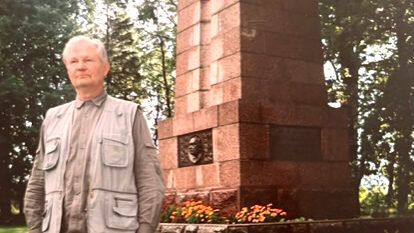While data exists for communication behaviour of Estonians and Finns, the stereotype of the Estonian interacting had not yet been studied. On both sides of the Bay of Finland, contrariness is seen as the common trait in social conversation. Russians are seen as impulsive.
The researchers expected that Estonians would favour calmness and the Russians openess in communication. It was assumed then that Estonians would be seen as calm and Russians ebullient, both by the Russians and Estonians.
The research involved 281 Russian and Estonian respondents, including 54 exchange students from St. Petersburg. Participants had to characterize the communications styles of various ethnic cultures and choose between pairs of antinoms that word that best describes the mannerisms of the ideal communicator. The subjects also described their own personal choice of an ideal communicator.
Estonians considered themselves as reserved, unpretentious, tranquil. They considered Russians to be emotional, open, talkative and friendly. Russians drew the same profile of themselves, with one exception. One would predict that Russians in Estonia would be described as more like Estonians, but it was unexpected that Russians of Russia are the ones describing themselves as reticent and not ready to strike up friendships, similar to Estonians. This may be the intention of Russians in Estonia attempting to be perceived as a contrast to Estonians.
Both Estonian Russians and those from Russia perceived Estonians to be taciturn and polite. Russians from Russia were more inclined to see Estonians as unhurried. Jokes about Estonians that circulate in Russia emphasize the slowness of Estonians and this may contribute to a charicature of the typical Estonian. The Russians who meet Estonians regulary are more familiar with the Estonian “temperament”.
The results showed that their was agreement amongst all respondents in describing Russians. It may be that a large population engenders a consistent and widely recognizable stereotype. In addition when compared to the St. Petersburg situation Estonians in Estonia communicate relatively often with Russians, but the interaction of the St. Petersburg students with Estonians is temporary.
The characteristics that an “ideal communicator” would was the same for all respondent categories: wisdom, friendlyness, sociability. The Estonians in typifying another Estonian emphasized individual reserve. Thus a Russian is a better communicator in the eyes of an Estonian. Russians agree with this in reference to themselves. Previous studies have also confirmed that Russians think of temselves positively.
Estonians when interacting with Russian speakers assume a more distant/defensive manner than Russians. This is heightened amongst the younger generation and residents of Tallinn. Individuals who interact more often with members of the other ethnic group have a more positive experience than others.
A study conducted by Tallinn and Tartu Universities showed that only one third of Estonian have more than just occasional contacts with Russian speakers. In contratst Russian speakers in Estonia are in contact at a much higher frequency. Fully one half of Russian speakers interact with Estonians everyday. The contacts occur mainly in a work environment.
In communicating, Estonians assume a defensive manner. This is more apparent amongst the younger generation and with residents of Tallinn. Those who communicate more frequently with the other cultural group also interact in a more positive manner.
Research shows that Estonans and Russians can acurately and consistently describe each other's traits in communicating. This presumably shows an understanding of some aspects of each others “national character”. These types of accurate and mutually confirmed appraisals and acceptance of differences are probably the result of cultures having co-existed with a level of tolerance which has contributed to avoiding any major confrontation.
One may ask whether this state of understanding has any implications for social integration, better acceptance of “being Estonian”, loyalty to the state etc? Or is it farfetched to assume that interpersonal contacts can help the republic's population to a better appreciation of each other's ethnic pride, the need for a national concensus on the inviolability of Estonia's sovereignty and the value to all residents of the ability of a small country to withstand intimidation from powerful entities abroad?



